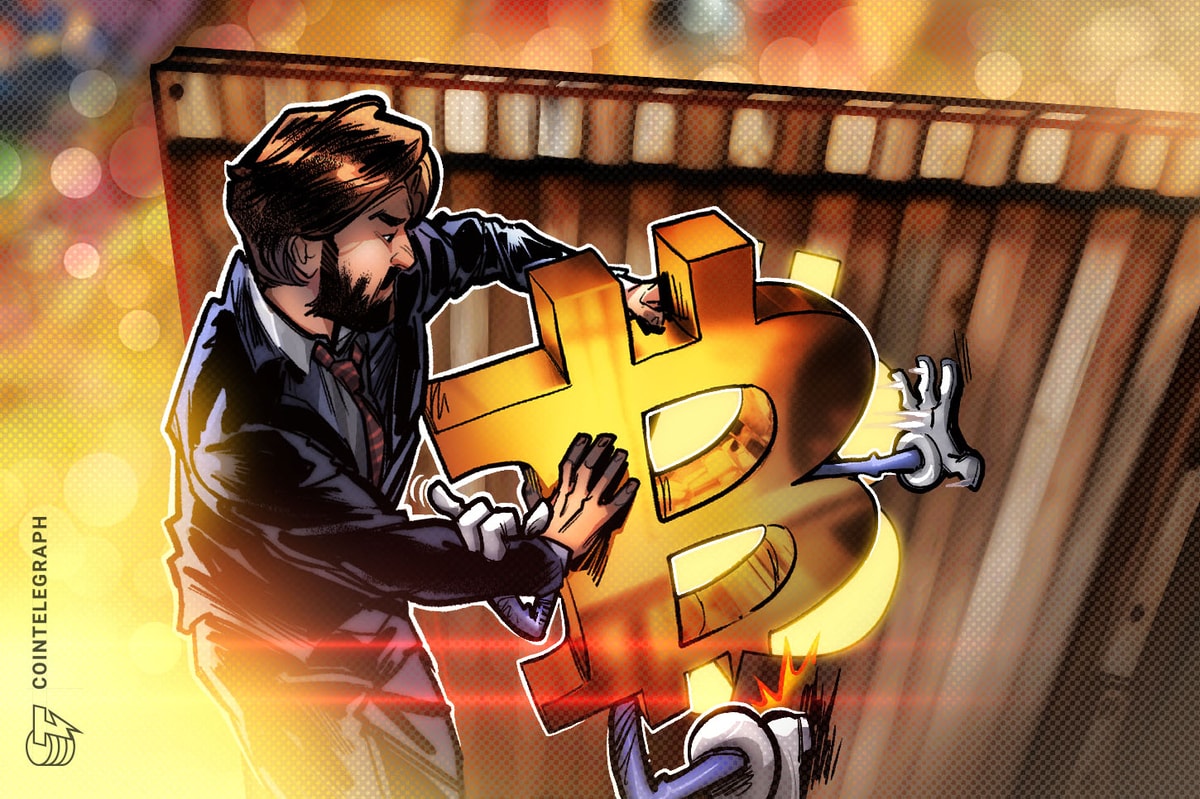Bitcoin price recovery at risk due to DXY strength, GBTC selling

Bitcoin (BTC) traders are reeling from the current sell-off, with the recently launched spot Bitcoin exchange-traded funds (ETFs) failing to produce the desired price upside. In addition to steady Grayscale Bitcoin Trust (GBTC) outflows impacting BTC price, market participants are now facing yet another problem: a strong U.S. dollar.
The U.S. dollar’s sharp recovery
The U.S. Dollar Index (DXY), which tracks the greenback’s performance against an array of top foreign currencies, has risen 2.71% from its Dec. 27 low of 100.617 amid encouraging United States economic data.
Retail sales, the Philly Fed Manufacturing Index and weekly initial jobless claims all provided tailwinds to the DXY, lifting it to new 2024 highs in the 103.65–103.70 range.
Data from the U.S. Census Bureau shows that December 2023 retail sales registered 0.6% growth against the expected 0.4% and 0.3% from the previous period.
The dollar’s recovery has also been attributed to a rebound in U.S. yields across the curve, all in response to declining bets on the likelihood that the Federal Reserve might start cutting interest rates as soon as March.
From a technical perspective, the U.S. Dollar Index looks poised to rise by more than 1.12% due to the formation of a classic V-shaped recovery pattern.
If the DXY successfully breaks above its neckline of 104.56, the likelihood of an extended recovery toward 107 over the next few months is higher.
Massive GBTC outflows impact BTC price
Since the spot Bitcoin ETFs were launched on Jan. 11, massive outflows have been witnessed from GBTC. As a result, Grayscale has liquidated a large number of Bitcoin as part of its GBTC holdings. Nearly 38,000 BTC has left GBTC since it was converted to a spot ETF on Jan. 11.
30,496 #Bitcoin was bought since ETF Launch.
Excluding $GBTC (selling driven by high fees vs others), the 9 ETFs bought 68,442 $BTC – a staggeringly large number.
Only 900 #Bitcoin is mined daily (dropping to 450/day in April)
— CC15Capital (@Capital15C) January 18, 2024
There were $484 million in outflows from Grayscale on Jan. 12 alone as GBTC holders capitalized on open redemption options.
UPDATE: Looks like @Grayscale's $GBTC saw $484 million in outflows today. @ARKInvest/@21Shares' $ARKB saw $42.5 million of INflows. @BitwiseInvest's $BITB flat on flows today. Don't have the data on any of the others yet. Total out of $GBTC is now ~$579 million pic.twitter.com/Ocuw9eHaHs
— James Seyffart (@JSeyff) January 13, 2024
In a recent statement, popular economist and gold bug Peter Schiff suggested that despite the approval of the spot Bitcoin ETF, the price of BTC is not increasing due to outflows from Grayscale’s GBTC product. He mentioned that even though the total inflows were larger, it seemed to have a limited impact on the overall BTC market.
The reason that investor buying of the new #BitcoinETFs isn't pushing up the price of #Bitcoin is that the outflows from $GBTC plus selling of #BTC exceed the combined inflows into all of the other ten Bitcoin ETFs. Once the initial ETF demand wanes, I expect a bigger price drop.
— Peter Schiff (@PeterSchiff) January 17, 2024
Related: Bitcoin trader who called $48K BTC price top flags new bearish signal
Bitcoin price could retrace to $34,000
Independent market analyst Ali has pointed out the movement of the BTC price in an ascending parallel channel since late 2022. According to Ali, Bitcoin’s current correction is due to rejection from the channel’s upper boundary at $48,000.
It appears this parallel channel is holding true! This suggests that #Bitcoin faced rejection from the channel's upper boundary at $48,000, and now $BTC will retrace to the lower boundary at $34,000, and then rebound back to the upper boundary at $57,000. https://t.co/2vDqYpwmpi pic.twitter.com/fBiNsmJ10C
— Ali (@ali_charts) January 13, 2024
The analyst anticipates a retracement for Bitcoin, projecting a decline to the lower boundary at $34,000.
However, market intelligence firm Santimet said the market was still optimistic about the long-term impact of the spot Bitcoin ETFs.
The firm posted the following chart on X, adding:
“However, the #FOMO surrounding the approvals arguably helped mark a local #crypto top, as many experts believed that the foregone conclusion of these approvals was already ‘baked in’ to the market’s prices at the time the announcements were made.”

After Bitcoin experienced a 16.9% drop from $49,000 last week to $40,600, Santiment said that the narrative surrounding these ETFs might shift to “associating them with words like #scam or #ripoff or #disaster.”
If a bearish sentiment emerges around the subject that initially drove prices higher from October through December, Santiment anticipates FUD — fear, uncertainty and doubt — could trigger a series of selloffs from novice traders.
through December, this #FUD and the inevitable selloffs from novice traders will likely allow for a market rebound from patient opportunists that continue to accumulate during these lower price levels. https://t.co/82igfnpKHS
— Santiment (@santimentfeed) January 19, 2024
This article does not contain investment advice or recommendations. Every investment and trading move involves risk, and readers should conduct their own research when making a decision.




Comments are closed.